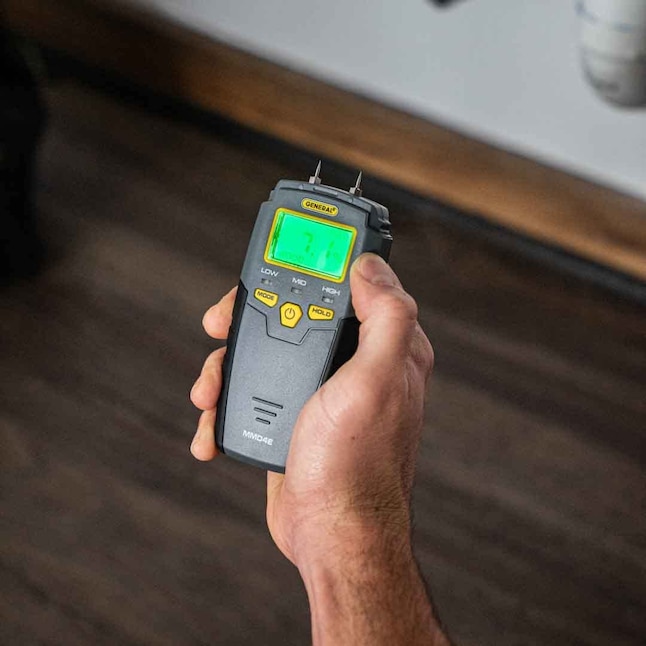Moisture Meter Reviews: Comparing the very best Designs for Specialist and Do It Yourself Usage
Moisture Meter Reviews: Comparing the very best Designs for Specialist and Do It Yourself Usage
Blog Article
Delve Into the Globe of Moisture Meters: Whatever You Need to Know
In the realm of moisture meters lies a globe of accuracy and usefulness that often goes unnoticed. Understanding how moisture meters run, the various kinds readily available, and their varied uses can drop light on their significance in guaranteeing high quality and efficiency.
How Moisture Meters Work
Moisture meters operate by gauging the electric conductivity or capacitance of materials to identify the moisture content existing. These meters are very useful devices across various sectors, including building and construction, woodworking, and farming. By using different approaches such as pin-type or pinless technology, dampness meters offer exact analyses that help specialists make notified choices.
Pin-type wetness meters work by placing the sharp pins into the product being evaluated. The electric conductivity between the pins is after that measured, with greater moisture levels leading to boosted conductivity. Moisture Meter. On the other hand, pinless dampness meters use electro-magnetic signals to check a larger location without causing any type of damage to the material's surface area. These meters are perfect for swiftly assessing wetness degrees in large areas or finished products.
No matter the technique made use of, dampness meters play a critical role in stopping concerns such as mold and mildew growth, structural damage, or product flaws triggered by excess dampness. Understanding exactly how these meters job is crucial for ensuring the high quality and honesty of products in numerous applications.
Sorts Of Moisture Meters
Given the vital duty dampness meters play in numerous industries, it is important to comprehend the different kinds readily available to specialists for properly assessing moisture levels - Moisture Meter. There are primarily two primary sorts of wetness meters: pinless and pin-type wetness meters

On the other hand, pinless dampness meters utilize electro-magnetic sensor plates to check a larger area of the product without causing any type of damage. This type is ideal for rapidly scanning huge areas and is frequently used for flooring, wall surfaces, and ceilings. Pinless meters are convenient for taking analyses on completed surfaces without leaving any type of noticeable marks.
Both sorts of wetness meters have their benefits and are picked based on the particular needs of the job available. Recognizing the distinctions between these types is critical for professionals to make precise dampness assessments.
Applications Across Industries
Construction experts count on moisture meters to examine the dampness degrees in building materials like drywall, concrete, and wood, which is vital for keeping structural integrity and stopping concerns like rot or mold and mildew. The flooring industry utilizes wetness meters to determine the dampness web content in subfloors prior to installing various floor coverings, avoiding expensive damages due to excess wetness. In the food market, dampness meters are made use of to check and regulate moisture degrees in items such as grains, nuts, and dried out fruits to keep quality and top quality.
Tips for Using Wetness Meters
Utilize the dampness meter's calibration settings to ensure exact readings this content when measuring the wetness content in numerous materials. Additionally, make certain the meter is set to the right moisture array for the material you are gauging to obtain the most specific results.
When making use of a pin-type wetness meter, put the pins to the proper deepness suggested for the product being evaluated. This ensures that the wetness analyses are taken from the right depth within the material, giving a more precise depiction of its wetness web content. For pinless moisture meters, keep in mind to keep proper contact with the product's surface area to get trusted readings.
Routinely check and replace the batteries in your moisture meter to avoid incorrect readings due to reduced power. Shop the meter in a completely dry and risk-free location when not in use to prolong its lifespan and maintain its precision. By complying with these ideas, you can maximize the efficiency of your dampness meter and acquire exact moisture content dimensions across different products.
Maintenance and Calibration
To ensure the precision of wetness content dimensions, routine maintenance and calibration of the dampness meter are crucial action in its proper performance. Maintenance involves maintaining the moisture meter tidy and complimentary from particles that could influence its analyses. It is essential to adhere to the maker's guidelines for cleansing to stop damage to the device. Furthermore, normal calibration is required to validate the accuracy of the analyses. Calibration readjusts the wetness meter this article to make certain that it provides trusted and regular outcomes.
Calibration ought to be executed occasionally, especially if the wetness meter is utilized often or in essential applications where precise measurements are needed. Lots of dampness meters feature calibration devices or can be adjusted by specialist solutions. Moisture Meter. It is recommended to maintain a log of calibration days and results to track the efficiency of the dampness meter over time. By maintaining and calibrating the moisture meter on a regular basis, customers can rely on the precision of the wetness material measurements obtained.
Final Thought

To conclude, dampness meters play an important role in numerous markets by properly determining the moisture web content of materials. Understanding just how these devices function, the different kinds available, and appropriate maintenance and calibration are crucial for acquiring dependable outcomes. Whether in manufacturing, building, or farming, the use of wetness meters aids guarantee discover here quality assurance and effectiveness in procedures.

In verdict, wetness meters play an essential duty in different markets by accurately determining the wetness web content of products.
Report this page